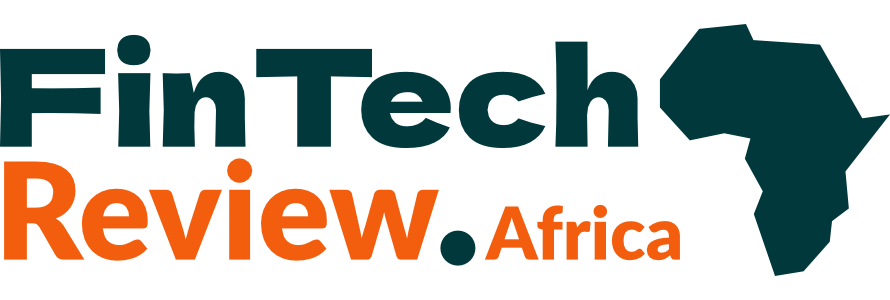Africa Selected M&A Transaction Profiles

Africa has emerged as a dynamic frontier for mergers and acquisitions, driven by a growing middle class, digital transformation, infrastructure needs, and favorable commodity cycles. While the continent presents unique risks—regulatory complexity, currency volatility, and political considerations—careful target selection and local partnerships can unlock compelling returns. Below are illustrative profiles of notable M&A activity across Africa in recent years, highlighting deal rationale, structures, buyer profiles, and key takeaways for investors and advisors.
1) Telecommunications: Consolidation in Sub-Saharan Africa
Profile snapshot
Target: A leading mobile operator with a strong subscriber base in East Africa; steady ARPU growth but limited 4G/5G coverage in rural areas.
Acquirer: Pan-African telecom group with regional licenses and expanding fintech ecosystem.
Deal value: USD 1.2–1.5 billion (indicative range)
Deal structure: Cash-and-stock consideration with performance-based earn-outs tied to network rollout milestones.
Rationale
Network roll-out acceleration and spectrum consolidation to improve nationwide coverage.
Cross-sell opportunities between voice, data, and digital financial services.
Regulatory alignment on roaming, interconnect pricing, and spectrum harmonization.
Key dynamics
Synergies from consolidating redundant towers and achieving better bargaining power with equipment vendors.
Regulatory scrutiny on market share, competition, and price caps; potential for expedited approvals under regional economic communities.
Takeaways
Strong risk-adjusted returns hinge on successful integration, cost synergies, and accelerated capex rationalization.
Proactive stakeholder engagement with regulators and governments is critical.
2) Financial Services: Digital Banking Platforms and Payments
Profile snapshot
Target: A digital-only bank or fintech payments platform serving underbanked populations in West Africa or Southern Africa.
Acquirer: A regional bank or payment processor expanding from traditional branches into digital ecosystems.
Deal value: USD 300–800 million (range varies by scale)
Deal structure: Primary equity investment with potential minority protections and strategic partnerships.
Rationale
Financial inclusion push, cash-light consumer behavior, and rapid adoption of mobile wallets and merchant payments.
Data assets and customer networks enabling cross-sell of lending, savings, and merchant solutions.
Key dynamics
Regulation around fintech licensing, data localization, and Know-Your-Cremacy/AML requirements.
Currency risk and repatriation, especially where cross-border digital wallets are involved.
Takeaways
The most successful deals blend strong governance, robust cyber and fraud controls, and clear interoperability with existing banking rails.
Local licensing insights and partner banks’ enforcement capabilities dramatically influence integration timelines.
3) Consumer & FMCG: E-commerce and Last-Mill Logistics
Profile snapshot
Target: Leading e-commerce platform or regional online marketplace withítě last-mile delivery network in multiple countries.
Acquirer: Global or regional consumer goods company seeking direct-to-consumer channels and data insights.
Deal value: USD 200–600 million
Deal structure: Equity investment with performance earn-outs linked to gross merchandise value (GMV) growth and delivery metrics.
Rationale
Capturing rising online shopping penetration and urbanization trends.
Enhancing supply chain resilience through in-country fulfillment centers and regional logistics hubs.
Key dynamics
Infrastructure quality, last-mile cost structures, and cross-border customs efficiency.
Local market competition, regulatory standards for consumer protection, and digital advertising norms.
Takeaways
Access to a large, digitally savvy customer base can unlock meaningful cross-sell opportunities for brands and retailers.
Successful integration requires investment in warehousing, inventory management, and last-mile tech platforms.
4) Natural Resources: Mineral Processing and Energy Transition
Profile snapshot
Target: A mid-tier mineral processing company or a clean-energy project developer (e.g., solar, wind) in mining regions.
Acquirer: International mining house or energy player seeking scale or strategic ESG-aligned assets.
Deal value: USD 500 million–1.5 billion (depending on asset quality and jurisdiction)
Deal structure: Mixed cash and contingent payments tied to production milestones, with long-term off-take arrangements.
Rationale
Access to high-quality ore bodies, processing capacity, and diversification of energy mix.
ESG themes and decarbonization strategies aligning with global investor demand.
Key dynamics
Sovereign risk, mine permitting, environmental liabilities, and offtake stability.
Currency and commodity price cycles affecting valuation.
Takeaways
Clarity on offtake agreements, safety, and environmental liabilities is paramount.
Partnerships with local communities and governments support smoother approvals and social license to operate.
5) Infrastructure: Power, Transport, and PPPs
Profile snapshot
Target: An operator or developer of critical infrastructure assets (roads, ports, transmission lines) under a public-private partnership (PPP).
Acquirer: International infrastructure investor or sovereign-backed fund seeking portfolio diversification.
Deal value: USD 300 million–2 billion (highly dependent on concession terms)
Deal structure: Public-private concession with milestone-based tariff regimes and long-term EPC/OC agreements.
Rationale
Long-duration cash flows, inflation-adjusted revenues, and strategic alignment with industrial growth corridors.
Ability to monetize operational efficiencies through lifecycle optimization.
Key dynamics
Regulatory frameworks for tariffs, tolling, and user charges; risk sharing with government counterparties.
Currency and inflation exposure; political risk insurance considerations.
Takeaways
Success hinges on transparent tariff models, robust risk-adjustment mechanisms, and strong local partner networks for operations and maintenance.
Practical Insights for Doing Africa M&A
Regulatory readiness: Africa comprises 55+ countries with diverse regulatory environments. Build a regulatory playbook early, mapping antitrust considerations, foreign ownership limits, and sector-specific approvals.
Currency and capital controls: Currency risk can affect valuation and post-close performance. Consider hedging strategies and currency-adjusted deal structures.
Local partnerships: Joint ventures, local minority partners, or minority protections can mitigate political and operational risk and improve regulatory clearance.
Data, governance, and compliance: Strong ESG and governance frameworks are increasingly material to deal value, especially in consumer, financial services, and infrastructure sectors.
Talent and integration: Post-merger integration plans should prioritize talent retention, system harmonization, and cultural alignment across regions with different languages and business norms.
Public perception and social license: Community engagement, local hiring commitments, and transparent impact assessments can influence regulatory outcomes and brand reputation.
How to Use These Profiles
If you’re an investor: Use these archetypes to benchmark potential targets, assess synergies, and stress-test regulatory and currency risk.
If you’re a corporate developer: Leverage the profiles to identify strategic fit, value accretion levers, and integration playbooks.
If you’re a advisor or banker: Tailor due diligence checklists to sector and geography, focusing on regulatory timelines, currency exposure, and local partner capabilities.
Closing Thoughts
Africa’s M&A landscape is increasingly sophisticated, with cross-border deals that blend regional scale with local insight. The most successful transactions balance strategic rationale with pragmatic execution: clear regulatory pathways, robust integration plans, and a nuanced understanding of local markets. As the continent accelerates digital transformation, infrastructure development, and financial inclusion, selective, well-structured M&A can unlock significant value for buyers, sellers, and broader stakeholders.

 Francis
Francis 





